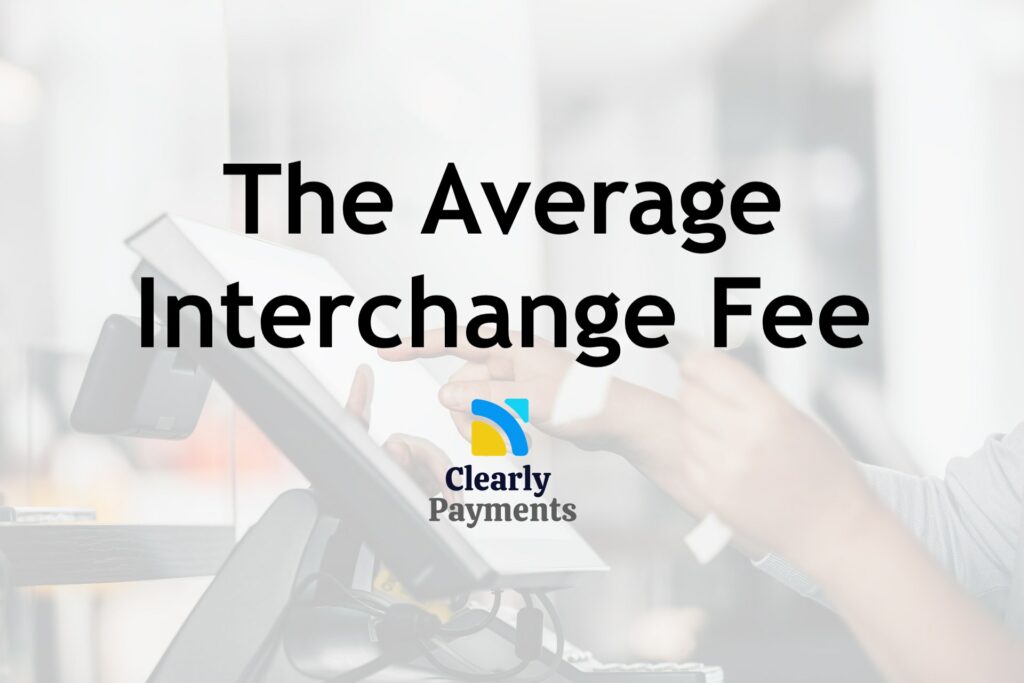Interchange fees are the biggest part of the fees that merchants pay whenever a credit card is used for a transaction at their business. This fee is paid by the merchant to the issuing bank as a percentage of the transaction amount. There are also additional fees that merchants pay for processing the payment. This article covers the average amount merchants pay.
Interchange fees change frequently
It is important to note that Interchange fees are subject to change and can be adjusted by card networks such as Visa and Mastercard. The frequency of changes can vary, but typically, changes are announced a few months in advance and occur once or twice a year. Additionally, regulatory changes can also affect interchange fees. It’s best to check with the credit card network for the most up-to-date information on their fees. You can see the current USA interchange fees and the Canada interchange fees on our website.
The average interchange fee has been a subject of debate. In the European Union, interchange fees for debit cards were capped at 0.2% in 2015 and 0.3% for credit cards in 2016. In the United States, the Durbin Amendment and Consumer Protection Act limited interchange fees for debit cards issued by large banks. You can read more about the interchange rates by country. Many merchants and consumers still argue that interchange fees remain too high and result in higher prices for consumers.
The average interchange fee in North America
We wish it was a very straight answer to give, but unfortunately it is not because there are hundreds of interchange rates. That being said, we will give some concrete numbers to give you a good picture on what merchants pay.
There is an important thing to make clear about the question. Are we talking about what is the average interchange rate merchants pay? Or are we talking about what is the average fee that merchants pay for payment processing? Those are different questions. The interchange fee is just one part of the overall payment processing fee, although it is the largest part. You can read more about the breakup of payment processing fees in this article.
The Average Interchange Fee is About 1.81% in USA and Canada
The average interchange fee that merchants pay is 1.81% in North America. If you are a business doing physical payments where you accept the credit card in-person, the average interchange rate is around 1.71%. If you are an eCommerce merchant, your average interchange rate will be about 1.91%.
The reason for this is that online payments have higher interchange rates than physical payments. Businesses that are higher risk have higher interchange fees. Online payments are higher risk because there is more fraud. Therefore, as a higher percentage of purchasing is done online by consumers and businesses, the average interchange rate merchants pay will increase. As a point of reference, the lowest interchange fee in North America is about 1.25% and the highest is about 2.5% for Visa and MasterCard or 3.5% for AMEX.
The Average Payment Processing Fee is About 2.2% in USA and Canada
Interchange fees are not the total fees that merchants pay for payment processing. You can add another 0.40% for other fees, such as card brand fee, processing fees, etc in USA and Canada. Therefore, the average payment processing fees that merchants pay are roughly 2.2%. An physical retailer would pay around 2.1% and an online store will pay around 2.3%.
Keep in mind that these are average rates. The big box retailers tend to be able to get lower rates while other businesses and higher risk businesses pay above average. The overall fees vary depending on several things such as the type of card being used, the type of merchant (risk level), the type of transaction, and the location of the transaction. It also might be worthwhile to read about the tactics to lower your payment processing fees.




